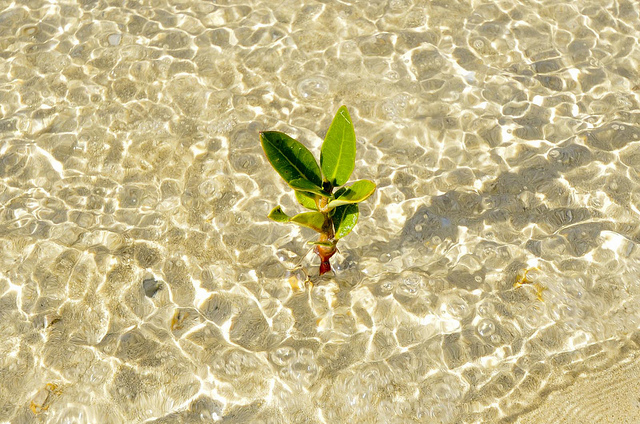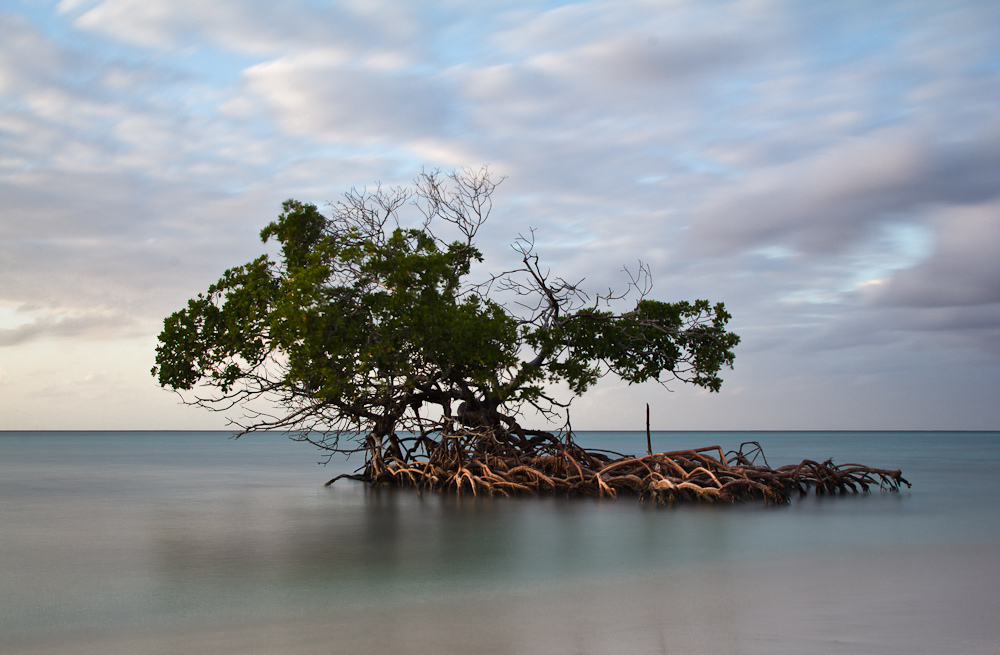
As global climate change continues to threaten coastal communities in the tropics, governments have increasingly focused on the promotion and conservation of mangrove forests for their protective qualities.
Mangroves — trees and shrubs that grow in tropical estuaries — are among the world’s most productive ecosystems and, compared to other forest systems, have an impressive capacity to sequester and store carbon at high rates.
They also serve as an important physical buffer, protecting coastal areas from storm surges and acting as “bioshields.” Despite these clear benefits, since 1980 the world has lost approximately 20 percent of its mangrove forests.
With this in mind, there is a growing need to understand the factors- both biophysical and societal- that contribute to sustainable mangrove management.
To date, discussions around mangrove forest conservation and rehabilitation have been highly technical, and focused primarily on ecological conditions under which mangroves can be planted and promoted. Lacking from this conversation is a more robust analysis about the ways land governance, resource rights arrangements, and land use planning — the social aspects of the conservation challenge — affect mangrove conservation and rehabilitation.
Compared to terrestrial forests, mangroves’ unique placement straddling land and sea has led to great ambiguity as to the specific jurisdictional agency overseeing their management (i.e. Forest, Aquaculture, and Marine) in many countries.
Regardless, local land and resource governance systems often determine the ultimate success or failure of resource conservation efforts. Research and experience from around the world have increasingly shown that when communities are empowered and granted legitimate rights and authority to manage their own terrestrial forests, the community, the government, and the forest ecology benefit in numerous ways.
More rigorous research is needed, however, to explore whether coastal forests, given their unique and often ambiguous jurisdictional status, would experience similar benefits.
In 2016, the U. S. Agency for International Development (USAID) supported the Center for International Forestry Research (CIFOR) to analyze mangrove governance conditions at the global scale, and through specific case studies in Indonesia and Tanzania.
THE IMPORTANCE OF JURISDICTIONS
Findings from the research show that mangroves generally fall under the management of national governments. In many countries, mangroves are under the jurisdiction of multiple ministries and agencies, creating a maze of overlapping and vague responsibilities that deliver little protection on the ground.
Mangroves are also often relegated to the periphery of forest sector management, with few practices or policies devised to specifically address their unique needs.
Typically, mangroves are classified as protected areas, but forest officials responsible for mangrove management often lack the resources and capacity needed to effectively protect them. Compounding this challenge are local communities who continue to be active users of mangrove forests, but who do not have clear or documented rights and incentives to sustainably use or protect them for the long term.
Countries are recognizing the importance of identifying mangrove management approaches that deliver results on the ground. In Tanzania, there is a growing recognition of the weakness of top-down mangrove protection approaches. Joint forest management and group rehabilitation schemes with local communities are increasingly being proposed in an effort to foster more community-led management processes.
In Indonesia, local community leaders are spearheading mangrove conservation efforts after understanding the ability of mangroves to protect their coastal homes and livelihoods. Intact mangroves can reduce the loss of life and damage caused by tsunamis, and during the 2004 Indian Ocean tsunami, coastal areas that were protected by mangrove forests were better able to withstand the devastating impacts of that disaster.
Some countries, seeing the critical role of mangroves, have proved to be more forward-looking. Both the Philippines and Thailand have laws and policies that enable community forestry practices and management. Vietnam recently approved a Coastal Forests Decree that calls for an analysis on how coastal forests are measured, classified, managed, and protected. Sri Lanka has an ambitious plan to protect its mangroves through a mix of laws, sustainable alternative incomes, and mangrove nurseries.
THE IMPACT OF GENDER ON CONSERVATION
The recent analysis also explored the intersection of mangrove conservation and gender. To date, little research has been conducted on the unique ways that men and women use, participate in, and impact mangrove systems, nor the ways that current resource governance systems prevent women’s participation in decision-making around coastal community resources.
The research found that while women are often keen to engage in paid employment for raising mangrove seedlings in nurseries, planting mangroves, or setting up enterprises to prepare products from mangroves — such as honey, syrups, or natural dyes — they rarely have a seat at the table when it comes to mangrove management.
As countries consider how to support the important biophysical aspects of mangrove conservation, the role of people, rights, and governance institutions should receive equal consideration. Mangroves play a key role in mitigating and adapting to the impacts of global climate change. To conserve and sustain them, it is imperative that we establish and strengthen the right mix of socially inclusive and participatory governance institutions.
*This article was adapted from its original form as published by USAID on Medium.
We want you to share Forests News content, which is licensed under Creative Commons Attribution-NonCommercial-ShareAlike 4.0 International (CC BY-NC-SA 4.0). This means you are free to redistribute our material for non-commercial purposes. All we ask is that you give Forests News appropriate credit and link to the original Forests News content, indicate if changes were made, and distribute your contributions under the same Creative Commons license. You must notify Forests News if you repost, reprint or reuse our materials by contacting forestsnews@cifor-icraf.org.

